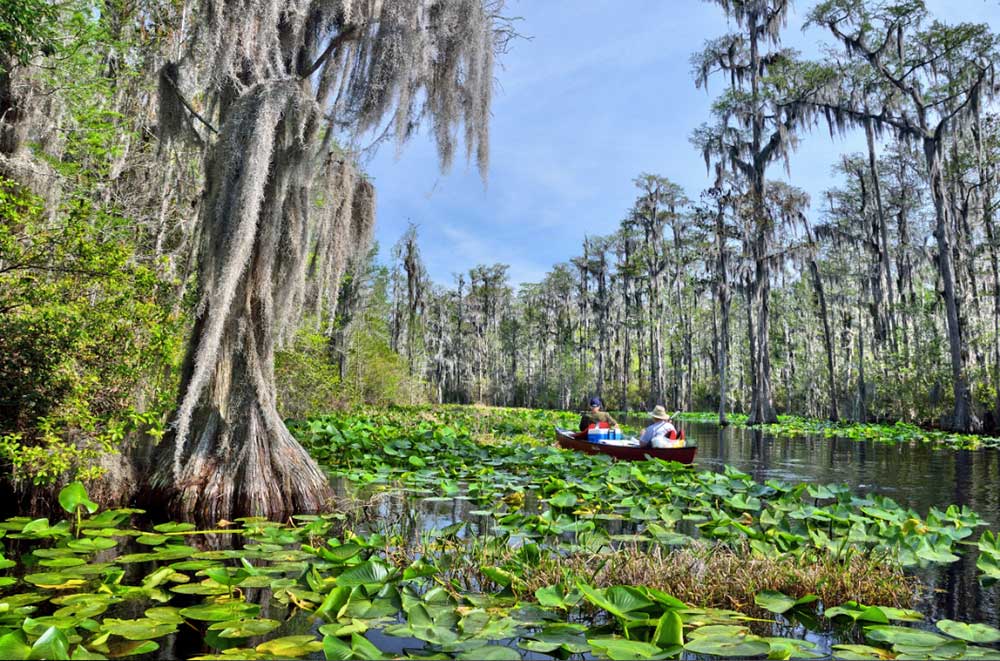By Burch Barger
Published in November 2020, the tenth edition of the Georgia Water Coalition’s “Dirty Dozen” list highlights the issues that threaten twelve waterways throughout the state. Five of these are located in our coastal region: the Altamaha River, the Satilla River, the St. Simons Sound, the Okefenokee Swamp, and Cumberland and Little Cumberland islands. Below is a brief synopsis of each threat and information on the conservation groups working to protect these vital waterways.
Altamaha River: The discharge from Rayonier Advanced Materials chemical pulp mill in Jesup has landed the Altamaha River on Georgia’s “Dirty Dozen” list more times than any other waterway. Altamaha Riverkeeper is advocating for Rayonier to upgrade its wastewater treatment standards as it seeks a renewal of its pollution control permit.
Satilla River: A proposed 463-acre landfill project located two miles from the river in Brantley County raises concerns ranging from pollution of groundwater and surface water to the risk of increased flooding. Satilla Riverkeeper notes the proposed landfill “is in a very vulnerable area, surrounded by a rural community that sources its drinking water from groundwater wells. Proper site limitations are essential to protecting the Satilla River, its tributaries, wetlands, and groundwater resources from contamination and pollution. The proposed site is not appropriate for a solid waste handling facility.”
St. Simons Sound: After more than a year of preparations and delays, the cutting and salvage process has begun on the Golden Ray, the 656-foot cargo ship capsized in the St. Simons Sound. As the massive boat is cut into eight sections, its cargo of 4000 cars and tens of thousands of gallons of oil threaten to contaminate the sound, surrounding marshes, beaches and fisheries on St. Simons and Jekyll islands. Altamaha Riverkeeper is monitoring the salvage process and recommends that NOAA conduct a Natural Resources Damage Assessment of St. Simons Sound, determining the environmental impacts and identifying restoration projects to compensate for losses associated with the disaster.
Okefenokee Swamp: Changes to the Clean Water Act went into effect earlier this year, removing from federal protection 376 acres of wetlands located within Twin Pines Materials’ proposed 12,000-acre titanium mining site near the Okefenokee Swamp. “A federal hurdle removed, if Twin Pines can now secure necessary state permits, mining operations can commence.” Conservation groups working to organize citizens and to inform Governor Kemp about the importance of protecting the Okefenokee include One Hundred Miles, Suwannee Riverkeeper, and Georgia River Network.
Cumberland and Little Cumberland Islands: A proposed rocket launching facility, Spaceport Camden, would sit on the banks of Todd Creek, an important tributary to the Satilla River located four miles from the shores of Cumberland and Little Cumberland Islands. The small launch missions proposed for the Spaceport Camden site have averaged a 43% failure rate between 2009 and 2016. This puts the human and wildlife populations — as well the natural wonders — of Cumberland Island and Little Cumberland Island at heightened risk of fire, pollution, and loss of life. One Hundred Miles continues to track this proposal and to express grave concerns for the impacts it would have on the Georgia coast.

